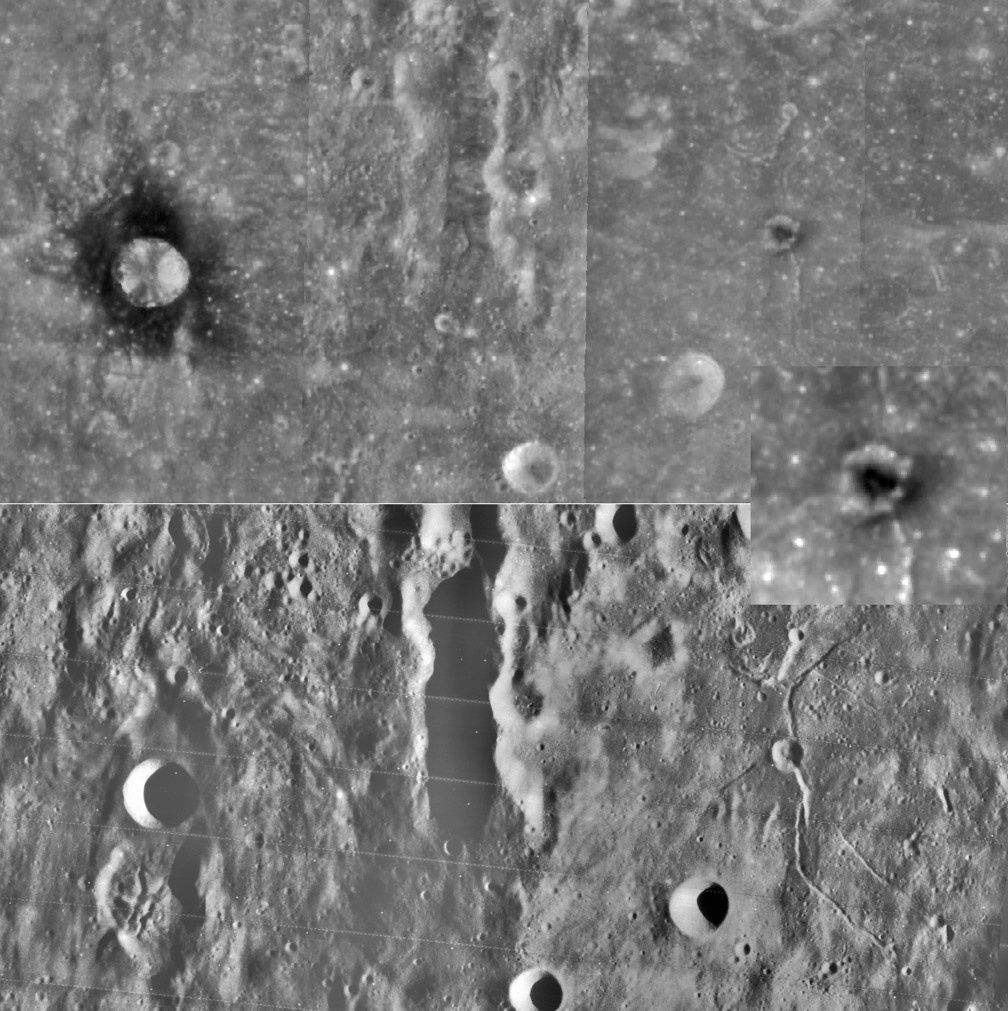July 19, 2018
Leaks
Originally published April 26, 2009

images constructed from USGeological Survey Map-A-Planet - Clementine above and Lunar Orbiter IV below.
The farside is nearly all old highlands material with the majority of its mare lavas in the center of the South Pole-Aitken Basin. There are two other significant expanses of mare lava within Tsiolkovsky and Mare Moscoviense. Smaller, isolated patches also occur, like little plumbing leaks. And unlike the massive deposits in SPA, Tsiolkovsky and Moscoviense the little leaks typically aren't in large impact structures whose deep fractures provide conduits to the surface. This image shows two odd leaks at about 9° N, just near the western limb as seen from Earth. The larger crater with a dark halo appears to be a normal impact crater that has excavated buried mare lavas - a larger version of Copernicus H. The middle of the images is cut by a secondary crater chain from the Orientale Basin to the south. To the right of the chain is a peculiar feature that has a faint dark nimbus but is not a dark halo imact crater. The enlarged Clementine inset shows that the dark material is on the floor of the crater, and the Lunar Orbit mosaic reveals that the crater is on a rille complex that cuts Orientale ejecta. I don't know of any other pyroclastic deposit that occupies the floor of a small crater. Further east, at Vasco da Gama R are other pyroclastics, but R is a floor-fractured crater. The dark halo crater implies that mare basalts underly the Orientale ejecta in this region, but other nearby fresh impacts have not excavated it. The pyroclastics in the dark floor crater and R show that magma - not just older solidified lava - was available too.
Chuck Wood
Related Links
Danny Caes independently noted the dark halo crater.
Yesterday's LPOD: Double Crossed
Tomorrow's LPOD: Yesterday's News (Cosmic Edition)
COMMENTS?
Register, Log in, and join in the comments.



